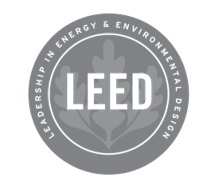¿WHAT IS LEED?
LEED (Leadership in Energy and Environmental Design) is a voluntary green building certification program created by the USGBC (U.S. Green Building Council). LEED is a third-party green building certification program and the globally recognized standard for the design, construction and operation of high-performance green buildings and neighborhoods. LEED establishes a clear frame of reference in order to identify and apply practical and measurable solutions to the design, construction, operation and management of green buildings.
LEED v4.1 is the latest version for LEED.
¿HOW DOES IT WORK?
The LEED rating systems are made up of prerequisites and credits. Prerequisites are required elements or green building strategies that must be included in any LEED-certified project. Credits are optional elements that projects can pursue to gain points toward LEED certification. Although the organization of prerequisites and credits varies slightly depending on the building type and associated rating system, LEED is generally organized within nine categories.
Categorías:
 |
Integrative process |
 |
Location and transportation |
 |
Sustainable sites |
 |
Water Efficiency |
 |
Energy and Atmosphere |
 |
Materials and resources |
 |
Indoor environmental quality |
 |
Innovation |
 |
Regional Priority |
TIPOS DE CERTIFICACIÓN
El número de puntos obtenidos por el proyecto determina el nivel de certificación LEED que el proyecto recibirá. La Certificación LEED está disponible en cuatro niveles progresivos de acuerdo con la siguiente escala:
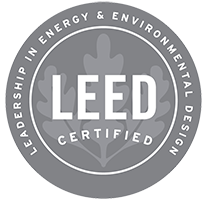
LEED
CERTIFIED
40 – 49
POINTS

LEED
SILVER
50 – 59
POINTS
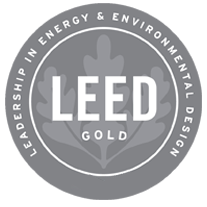
LEED
GOLD
60 – 79
POINTS

LEED
PLATINUM
80+
POINTS
¿What kind of projects can achieve certification?
Taking into account the complete life cycle for a building as wall as its urban environment, LEED has specialized annd adapted to the needs of the construction marketplace. currently LEED has different types of certificatio for different projects.
| BD+C Building Design and Construction |
For new construction or major renovations; includes New Construction, Core & Shell, Schools, Retail, Hospitality, Data Centers, Warehouses & Distribution Centers, and Healthcare. |
| O+M Building Operations and Maintenance: |
For existing buildings that are undergoing improvement work or little to no construction; includes Existing Buildings, Schools, Retail, Hospitality, Data Centers and Warehouses & Distribution Centers. |
| ID+C Interior Design and Construction: |
For complete interior fit-out projects; includes Commercial Interiors, Retail and Hospitality. |
| ND Neighborhood Development: |
For new land development projects or redevelopment projects containing residential uses, nonresidential uses, or a mix. Projects can be at any stage of the development process, from conceptual planning to construction; includes Plan and Built Project. |
| Homes: | For single family homes, low-rise multi-family (one to three stories) or mid-rise multi-family (four to six stories); includes Homes and Multifamily Lowrise and Multifamily Midrise. |
| Cities and communities: | For entire cities and sub-sections of a city. Using the Arc performance platform, LEED for Cities projects can measure and manage their city’s water consumption, energy use, waste, transportation and human experience. |
¿What does the certification offer?
LEED certified buildings have less devaluation than conventional real estate.
Certification allows for commitment to sustainability to be known and recognized by the community, companies and the industry.
LEED buildings communicate and capitalize investment in sustainability, which generates further competition within the market.
Certification allows for third party verification and qualify for government incentives.
Offers a system in which a project earns points in differente sustainability areas.
Energy consumption savings that get feflected in the building operation’s energy bills.
Improves wellbeing and environmental quality for building users.
Improves occupant comfort and diminishes employees’ absenteeism. Improvements in indoor environmental quality, well orientes natural lighting, personal space controls or access to vegetated areas all contribute to higher productivity in the workplace.
Friendlier retail spaces. Healthy spaces, with fresh air, vegetated spaces and natural lighting aremore sough after bys consumers, they retain clients longer and are sensation provoking during thir shopping experience.

¿What is EDGE?
An innovation of IFC, a member of the World Bank Group, EDGE (Excellence in Design for Greater Efficiencies) makes it faster, easier and more affordable than ever before to build and brand green. EDGE reveals the systems and solutions that work best for your climate, bringing international cachet to your certified project without losing the local context. Meet the growing expectations of your customers by creating value and positively impacting their lives, resulting in greater profitability and a healthier environment for all.
¿How does it work?
EDGE requires that a building achieve a minimum projected reduction of 20% in energy and water use, and embodied energy in materials as benchmarked against a standard building.
As a facilitating tool, EDGE makes available to any user interactive, cloud-based EDGE Buildings App with preloaded information tailored to all available regions, allowing real-time visualization of the savings and return percentage of Investments to achieve with the tentative strategies to develop.
To comply with the EDGE certification, the project to be certified must undergo an Audit in its Design and during its Construction.
¿What kind of projects can get certified?
Applies for new constructions such as: healthcare facilities, residences, schools, hotels, warehouses, offices and retail.
¿What does the certification offer?
Low-cost certification
Rapidly increases the building’s commerciability
Includes a preliminary certificate after the design audit, which can be used to promote the building with the EDGE brand.
EDGE reduces investment risk, draws in new clients and represents a social responsibility declaration for corporate excellence and environmental responsibility.
Establishes leadership within the construction industry and real estate market.
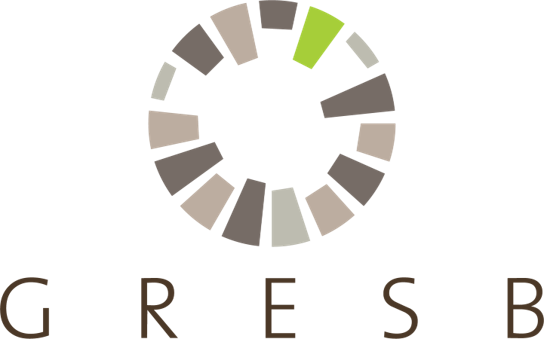
¿What is GRESB?
GRESB is the environmental, social and governance (ESG) benchmark for real assets. Working in collaboration with the industry, GRESB defines the global standard for sustainability performance in real assets, providing standardized and validated ESG data to the capital markets.
GRESB assesses the sustainability performance of real estate and infrastructure portfolios and assets worldwide. It offers ESG data, Scorecards, Benchmark Reports and portfolio analysis tools.
GRESB’s evaluations cover: real estate, debt and infrstructure.
¿How does it work?
The GRESB Assessment is based on a broader view of sustainability, comprised of seven aspects:
- Performance Indicators (energy, GHG emissions, water, & waste)
- Monitoring & Environmental Management Systems
- Policy & Disclosure
- Management
- Stakeholder Engagement
- Risk & Opportunities
- Building Certifications
GRESB performs annual assessments of participating companies and funds in order to capture information about ESG performance and sustainability best practices for real estate and infrastructure portfolios and assets worldwide. In order to do this, GRESB has developed a comparative assessment frame that offers active assets investors tools for monitoring, managing and connect with investment managers.
The Assessments are guided by what investors and the industry consider to be material issues in the sustainability performance of real asset investments and are aligned with international reporting frameworks such as GRI and PRI.

COMPANIES, FUNDS AND ASSETS
Managers and operators complete the GRESB Assessments providing data on the ESG performance of their assets and portfolios.
GRESB ASSESSMENTS
GRESB validates, scores and benchmarks ESG performance data, providing business intelligence and engagement tools to investors and managers.
INSTITUTIONAL INVESTORS
Investors use GRESB data and analytical tools to manage ESG risks, capitalize on opportunities and engage with investment managers.
¿Cómo funciona?
Los resultados de la evaluación se lanzan en septiembre de cada año. El desempeño de la sostenibilidad se evalúa en dos dimensiones: Gestión y Política e Implementación y Medición. Tomados en conjunto, estos proporcionan una puntuación GRESB general. Los resultados se trazan en el modelo GRESB, y los participantes reciben una calificación GRESB entre 1 estrella y 5 estrellas. Éste dato se compara con los pares en el mismo tipo de propiedad para bienes raíces, sector para infraestructura y por región. De esta manera, ESG se hace medible.
¿Qué ofrece la certificación?
Capacidad mejorada para administrar su cartera y activos frente a los riesgos de sostenibilidad. Una visión de cómo aprovechar al máximo las oportunidades relacionadas con la sostenibilidad, tales como la reducción de los costos operativos, el cumplimiento de los requisitos reglamentarios y la satisfacción de las preferencias en desarrollo de los inquilinos corporativos.
Una imagen más clara de su rendimiento de ESG y cómo se compara con sus compañeros. Mejor comprensión de las acciones que puede tomar para mejorar su rendimiento de ESG de la manera más eficiente.
Mayor conocimiento de las necesidades y perspectivas de los inversores para enriquecer su compromiso con los inversores. Mejora de la oportunidad de atraer a nuevos inversores, incluidos los inversores a largo plazo y los inversores que buscan un análisis de riesgo y oportunidad más completo.
Menor tiempo y esfuerzo necesarios para responder a solicitudes ad-hoc relacionadas con problemas de sostenibilidad. Posibilidad de informar al mercado sobre el rendimiento de ESG validado utilizando un estándar global de la industria.
Mensajes más consistentes sobre su desempeño sostenible a sus partes interesadas. Reconocimiento de que ha dado un paso significativo hacia el liderazgo en cuestiones de ESG.
Tienen un alto potencial de mejorar su reputación y desempeño, tanto financiero como de negocio.
La misión de GRESB es mejorar y proteger el valor para los accionistas evaluando y potenciando las prácticas de sostenibilidad en el sector de activos reales.
¿Qué proyectos se pueden certificar?
GRESB evalúa el rendimiento de sostenibilidad de las carteras y activos inmobiliarios e infraestructura en todo el mundo, tales como: instituciones financieras y fondos de inversión
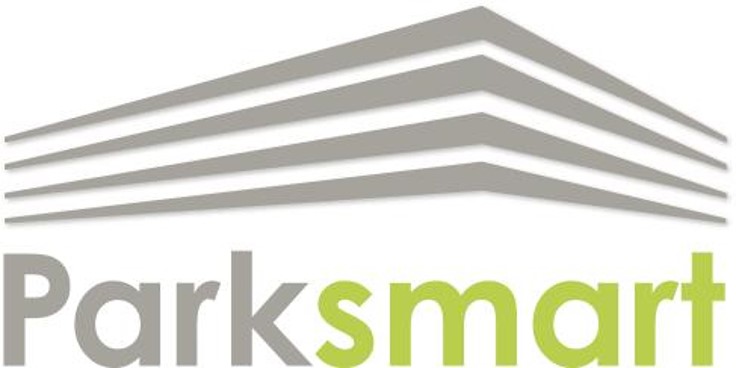
¿Qué es?
Parksmart es el único programa de certificación que define, mide y reconoce las prácticas sostenibles en la gestión, programación, diseño y tecnología de la estructura de estacionamientos de alto rendimiento. Parksmart distingue las instalaciones de estacionamiento que tienen una visión sostenible del futuro y que forman parte de una red de movilidad sostenible en el mundo.
Parksmart guía los proyectos hacia estrategias innovadoras orientadas a soluciones para avanzar en la movilidad sostenible a través de un diseño y operación más inteligente de las estructuras de estacionamiento.
¿Cómo funciona?
Parksmart ofrece una ruta para instalaciones de estacionamiento con estrategias innovadoras orientadas a soluciones. Ésta certificación otorga puntos a las estructuras de estacionamiento con prácticas progresistas y sostenibles en tres categorías: gestión, programas y diseño de la estructura tecnológica.
Los proyectos tienen cinco años para completar la certificación y pueden presentar medidas, todas a la vez, o trabajar para obtener la certificación a lo largo del tiempo.
Los proyectos de construcción nuevos, o los proyectos que se completaron y pusieron en marcha dentro de los dos años posteriores a la inscripción, son elegibles para obtener la certificación Bronce, Plata u Oro. Deben ganar un mínimo de 20 puntos en cada una de las tres principales categorías de certificación.
Los proyectos existentes son aquellos completados y puestos en marcha más de dos años antes del registro. Los anteriores, son elegibles para obtener la certificación Pioneer y deben obtener un mínimo de 15 puntos en cada una de las tres principales categorías de certificación.
Nuevos proyectos de construcción
Puntos de nivel de certificación
Parksmart Bronze 110-134 puntos
Parksmart Silver 135-159 puntos
Parksmart Gold más de 160 puntos
Estructuras existentes
Puntos de nivel de certificación
Parksmart Pioneer 90+ puntos
Proceso:
Este involucra 4 pasos; registro, aplicación, revisión y certificación.
¿Qué proyectos se pueden certificar?
Ésta certificación está dirigida a instalaciones de estacionamientos nuevas y existentes de todo tipo, incluidas comerciales, universitarias, municipales, hospitalarias, minoristas y de hostelería. Los proyectos pueden ser independientes o formar parte de un edificio de uso mixto.
¿Qué ofrece la certificación?
El que los estacionamientos cuenten con ésta certificación ofrece importantes beneficios para conductores, inquilinos, propietarios de edificios y administradores de propiedades.
Crea oportunidades para que los estacionamientos reduzcan su consumo de energía a través de la iluminación, la ventilación y los controles.
